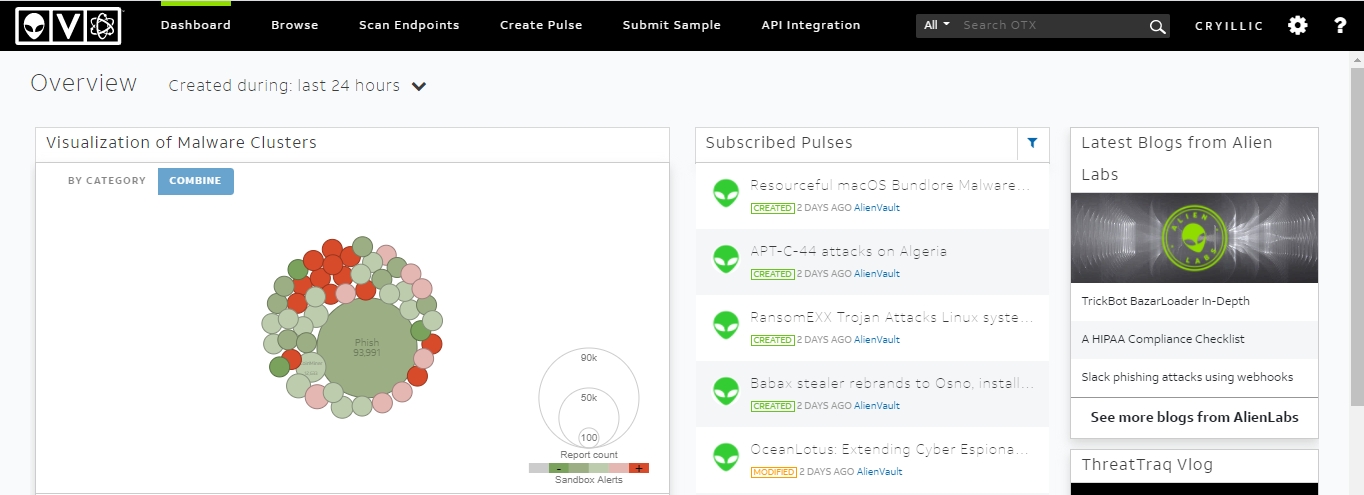Introduction to AlienVault OTX
AlienVault OTX from AT&T Cybersecurity is one of the main ISACs that is used as an exchange for community maintained threat intelligence.
You will need to create an AlienVault account before you can fully use the application. Go to https://otx.alienvault.com/ and create an account before continuing.

Alienvault uses 'Pulses' to create trackers for various categories. Pulses can be categorized by Malware type, APT or group, and targeted industry. All pulses are community-created excluding official pulses from AlienVault.
Pulses can include a wide variety of IOCs such as File Hashes (MD5, SHA1), IPv4, IPv6, Domain, URL, YARA, CVE, and more.

The main page of OTX you will use is the Dashboard. The default dashboard includes a visualization of the most common active malware broken down by category as well as a list of Subscribed Pulses. By default, only AlienVault's Subscribed Pulses will be listed. This can be expanded upon later.
There are also six different tabs that you can navigate to on the navigation bar, they are outlined below.
Dashboard - This is shown above in the screenshot above. It's the main page of OTX and will provide a brief overview of important intel.
Browse - This will allow you to see all new pulses and sort by various categories to find the newest intel.
Scan Endpoints - This is an automated service called OTX Endpoint Security that will scan endpoints for indicators.
Create Pulse - This will allow you to create your own pulses and contribute to the threat exchange.
Submit Sample - This allows you to submit a malware sample or URL sample which OTX will analyze and generate a report based on the provided sample.
API Integration - Allows synchronization of the threat exchange with other tools for monitoring your environment.
Last updated
Was this helpful?